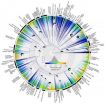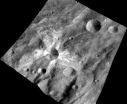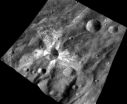(Press-News.org) The world's first family tree linking all living bids and revealing when and where they evolved and diversified since dinosaurs walked the earth has been created by scientists from the University of Sheffield.
Experts used the family tree to map out where the almost 10,000 species of birds live to show where the most diversification has taken place in the world.
Researchers, from the University of Sheffield, Yale University, University of Tasmania and Simon Fraser University, say the creation of new species has speeded-up over the last 50 million years. Surprisingly, species formation is not faster in the species rich tropics, but was found to be faster in the Western Hemisphere compared to the Eastern Hemisphere as well as on islands.
As well as being the first time scientists have created a family tree for birds, it is hoped the research could help prioritise conservation efforts in a bid to save the most diverse species from extinction.
Dr Gavin Thomas, of the University of Sheffield's Department of Animal and Plant Sciences, said: "We have built the first ever family tree showing the evolutionary relationship among the species of birds. We used fossils and genetic data to estimate the ages of all the different branches of the bird tree so that we could assess how diversity has accumulated through time. Our work is indebted to researchers from museums and universities who have collected astounding amounts of genetic data from birds around the world."
Despite major steps forward in modern super computers it has still taken the researchers almost five years to analyse the millions of year's worth of fossil data, DNA, maths and maps, to create this never-before-snapshot of how the thousands of birds alive made it to where they are today.
To even enable the scientists to calculate which species were more or less diverse they had to create a new "species rate" measure.
Dr Thomas added: "Diversification is the net outcome of new species arising, called speciation, and existing species going extinct. We combined this data with existing data on the geographic ranges of all living bird species so that we could map diversification across the world.
"This 'phylogeny' is important because it is the first that includes all living birds. It means we can ask questions about biodiversity and evolution on a global scale and gain new insight into how diversity has changed over millions of years as well as understand those changes. More widely, one way in which the phylogeny can be used, and which may not be obvious, is in helping to prioritise conservation efforts.
"We can identify where species at greatest risk of extinction are on the tree and ask how much distinct evolutionary history they represent. Some species have many close relatives and represent a small amount of distinct evolutionary history whereas others have few close relatives and their loss would represent the disappearance of vast amounts of evolutionary history that could never be recovered. Environmental change has very likely affected diversification over time. Climate change could be a part of that through its effects on the extent of different types of habitat."
The paper – titled 'The global diversity of birds in space and time' - is published in the journal Nature.
INFORMATION:
Notes to editors:
The University of Sheffield
With nearly 25,000 students from 125 countries, the University of Sheffield is one of the UK's leading and largest universities. A member of the Russell Group, it has a reputation for world-class teaching and research excellence across a wide range of disciplines. The University of Sheffield has been named University of the Year in the Times Higher Education Awards for its exceptional performance in research, teaching, access and business performance. In addition, the University has won four Queen's Anniversary Prizes (1998, 2000, 2002, and 2007).
These prestigious awards recognise outstanding contributions by universities and colleges to the United Kingdom's intellectual, economic, cultural and social life. Sheffield also boasts five Nobel Prize winners among former staff and students and many of its alumni have gone on to hold positions of great responsibility and influence around the world. The University's research partners and clients include Boeing, Rolls-Royce, Unilever, Boots, AstraZeneca, GSK, ICI, Slazenger, and many more household names, as well as UK and overseas government agencies and charitable foundations.
The University has well-established partnerships with a number of universities and major corporations, both in the UK and abroad. Its partnership with Leeds and York Universities in the White Rose Consortium has a combined research power greater than that of either Oxford or Cambridge.
Project Sunshine
A major focus of Science research in Sheffield is on meeting the increasing food and energy needs of the world's population in the context of an uncertain climate and global environment change. This challenge is being met through Project Sunshine, which unites scientists across the traditional boundaries in both the pure and applied sciences.
For further information please contact: Paul Mannion, Media Relations Officer, on 0114 2229851 or email P.F.Mannion@sheffield.ac.uk
To view this news release and images online, visit:
To read other news releases about the University of Sheffield, visit: http://www.shef.ac.uk/news
First ever family tree for all living birds reveals evolution and diversification
2012-11-01
ELSE PRESS RELEASES FROM THIS DATE:
High blood pressure damages the brain in early middle age
2012-11-01
Uncontrolled high blood pressure damages the brain's structure and function as early as young middle-age, and even the brains of middle-aged people who clinically would not be considered to have hypertension have evidence of silent structural brain damage, a study led by researchers at UC Davis has found.
The investigation found accelerated brain aging among hypertensive and prehypertensive individuals in their 40s, including damage to the structural integrity of the brain's white matter and the volume of its gray matter, suggesting that vascular brain injury "develops ...
Protoplanet Vesta: Forever young?
2012-11-01
Like a movie star constantly retouching her makeup, the protoplanet Vesta is continually stirring its outermost layer and presenting a young face.
New data from NASA's Dawn mission show that a common form of weathering that affects many airless bodies like Vesta in the inner solar system, including the moon, surprisingly doesn't age the protoplanet's outermost layer.
The data also indicate that carbon-rich asteroids have been splattering dark material on Vesta's surface over a long span of the body's history.
The findings are described in two papers published ...
Assembly not required
2012-11-01
Cambridge, Mass. - October 31, 2012 - Scientists have created new kinds of particles, 1/100th the diameter of a human hair, that spontaneously assemble themselves into structures resembling molecules made from atoms. These new particles come together, or "self-assemble," to form structures in patterns that were previously impossible to make and hold promise for manufacturing advanced optical materials and ceramics.
The method, described in the latest issue of the journal Nature, was developed by a team of chemists, chemical engineers, and physicists at New York University ...
Virtual reality 'beaming' technology transforms human-animal interaction
2012-11-01
Using cutting-edge virtual reality technology, researchers have 'beamed' a person into a rat facility allowing the rat and human to interact with each other on the same scale.
Published today in PLOS ONE, the research enables the rat to interact with a rat-sized robot controlled by a human participant in a different location. At the same time, the human participant (who is in a virtual environment) interacts with a human-sized avatar that is controlled by the movements of the distant rat. The authors hope the new technology will be used to study animal behaviour in ...
Global genome effort seeks genetic roots of disease
2012-11-01
By decoding the genomes of more than 1,000 people whose homelands stretch from Africa and Asia to Europe and the Americas, scientists have compiled the largest and most detailed catalog yet of human genetic variation. The massive resource will help medical researchers find the genetic roots of rare and common diseases in populations worldwide.
The 1000 Genomes Project involved some 200 scientists at Washington University School of Medicine in St. Louis and other institutions. Results detailing the DNA variations of individuals from 14 ethnic groups are published Oct. ...
Medical schools fall short on teaching students about obesity
2012-11-01
WINSTON-SALEM, N.C. – Oct. 31, 2012 -- It's no secret that obesity is a major problem in America.
More than one-third of adults and one-sixth of children are obese and it is one of the leading causes of preventable death. The costs associated with obesity are estimated at $99 million annually, comparable to the economic toll of cigarette smoking.
Despite all this, few U.S. medical schools are providing adequate, effective training on how to address weight issues in obese patients, according to researchers at Wake Forest Baptist Medical Center.
"Medical students are surrounded ...
New type of 'space weathering' observed on asteroid Vesta
2012-11-01
PROVIDENCE, R.I. [Brown University] — The surface of the giant asteroid Vesta is weathering in a way that appears to be completely different from any other asteroid yet visited, according to new data recorded by NASA's Dawn spacecraft. This new type of space weathering suggests that there's something about Vesta — perhaps its mineral composition or its position in the solar system — that makes its surface environment fundamentally different from other asteroids studied thus far.
The new data are presented in a paper published Nov. 1, 2012, in the journal Nature.
Space ...
Taming mavericks: Stanford researchers use synthetic magnetism to control light
2012-11-01
Magnetically speaking, photons are the mavericks of the engineering world. Lacking electrical charge, they are free to run even in the most intense magnetic fields. But all that may soon change. In a paper published in Nature Photonics, an interdisciplinary team from Stanford University reports that it has created a device that tames the flow of photons with synthetic magnetism.
The process breaks a key law of physics known as the time-reversal symmetry of light and could yield an entirely new class of devices that use light instead of electricity for applications ranging ...
OHSU researchers discover potential way to repair brain damage in multiple sclerosis
2012-11-01
PORTLAND, Ore. — Researchers at Oregon Health & Science University have discovered that blocking a certain enzyme in the brain can help repair the brain damage associated with multiple sclerosis and a range of other neurological disorders.
The discovery could have major implications for multiple sclerosis, complications from premature birth and other disorders and diseases caused by demyelination – a process where the insulation-like sheath surrounding nerve cells in the brain becomes damaged or destroyed. Demyelination disrupts the ability of nerve cells to communicate ...
Spot the difference
2012-11-01
The 1000 Genomes Project today presents a map of normal human genetic variation – everything from tiny changes in the genetic code to major alterations in our chromosomes. In a DNA version of 'spot-the-difference', EMBL scientists and their colleagues studied the genomes of 1092 healthy people from Europe, the Americas and East Asia, systematically tracking what makes us different from each other. Their results, published in Nature, open new approaches for research on the genetic causes of disease.
"The 1000 Genomes Project has achieved something truly exceptional in ...





